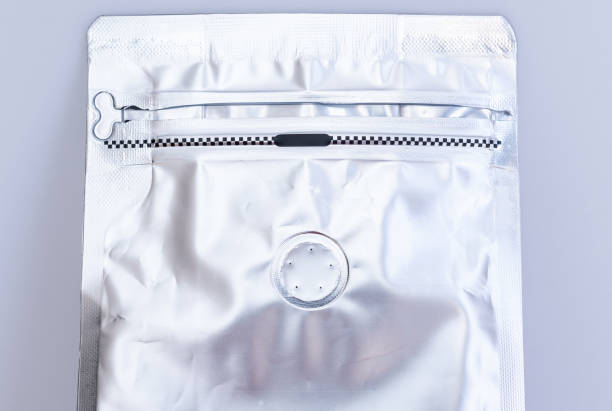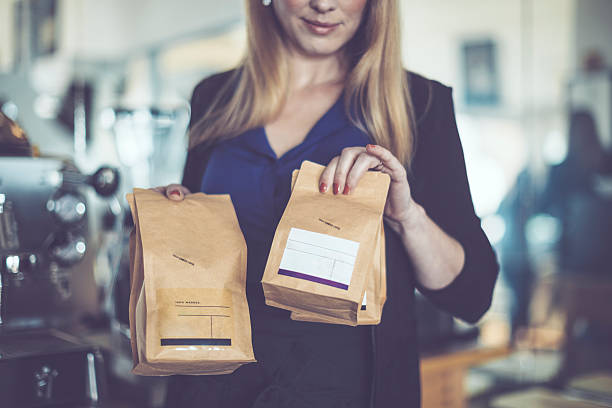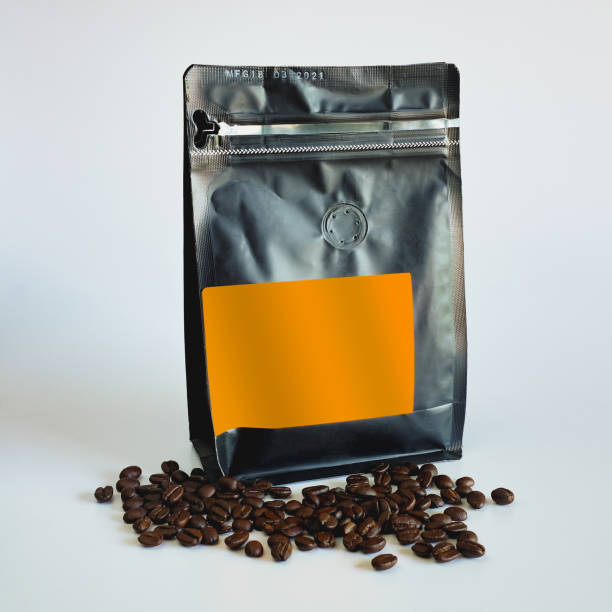The preservation of the freshness of their roasted coffee is a significant issue for coffee roasters. The degassing valve is an important instrument in doing this.
The degassing valve, which was patented in 1960, is a one-way vent that allows coffee beans to gently release gases such as carbon dioxide (CO2) without coming into contact with oxygen.
Degassing valves, which appear to be simple plastic nozzles, are highly appreciated goods that allow roasted coffee to travel greater distances without being harmed.
However, their inclusion in sustainable coffee packaging might be troublesome because they must frequently be removed before disposal. As a result, some roasters may use bags without degassing valves if their coffee will be served soon after roasting.
Continue reading to learn more about degassing valves and the alternatives accessible to roasters.
What is the purpose of a degassing valve?
Coffee exhibits tremendous physical changes when roasted, with its volume increasing by up to 80%.
Furthermore, roasting releases gases held in the bean, approximately 78% of which is carbon dioxide (CO2).
Degassing occurs during the packing, grinding, and drinking of coffee. For coarse, medium, and fine grind sizes, for example, 26% and 59% of the CO2 in coffee is released after grinding, respectively.
While the presence of CO2 is typically an indication of freshness, it can have a detrimental influence on the flavor and scent of coffee. For example, a coffee that hasn’t been given enough time to degas may produce bubbles during brewing, resulting in inconsistent extraction.
Degassing must be carefully managed since too much of it might cause the coffee to become stale. However, insufficient degassing can affect how well a coffee extracts and forms crema.
Roasters discovered several strategies to control the degassing process over time via trial and error.
The use of rigid packaging that could withstand the pressure of CO2 accumulation or allowing the coffee to degas before packing have both been used as solutions in the past. They also tested vacuum-sealing coffee while it was still in its container.
However, each approach had disadvantages. For example, it took too long for the coffee to degas, which exposed the beans to oxidation. Rigid packing, on the other hand, was costly and difficult to move.
Too many volatile scent components of the coffee were eliminated during vacuum sealing, which had an adverse effect on its sensory qualities.
The degassing valve was invented in the 1960s by Italian packaging company Goglio, which was the turning point.
The degassing valve is still essentially the same today and comprises of a rubber diaphragm inside of an injection moulded valve. Surface tension against the valve’s body is maintained by a liquid layer in the inner layer of the valve.
The liquid slips away and moves the diaphragm when the pressure differential reaches the surface tension. This makes it possible for gas to escape while keeping oxygen out of the package.
Degassing valves’ drawback
There are several reasons why roasters can decide against using degassing valves, despite the fact that they have revolutionized the way coffee is packed.
The most obvious effect is that it raises the price of packing. Some roasters are also worried that valves hasten the loss of aromatics. They discovered that closing a bag without a valve may cause it to puff up and expand but does not cause it to explode.
Because of this, these roasters frequently decide to vacuum-seal their coffee instead.
The uncertainty around whether degassing valves are recyclable is another issue with them.
There is frequently little information available on the proper separation and recycling of degassing valves. Due to the infrequent printing of valve recycling instructions on coffee packaging, a large portion of this misunderstanding is transferred to the customer.
Consumers are becoming more conscious of how their purchases affect the environment. As a result, they could choose a different brand of coffee if the package lacks recycling information.
Roasters might choose reusable degassing valves for their coffee bags as a solution. These can be rapidly and effectively incorporated to packaging, and some of them can use up to 90% less plastic.
As an alternative, certain degassing valves are created from bioplastics such polylactic acid, which are more affordable for roasters and environmentally friendly.
Communication of the valve’s disposal instructions, such as how it may be removed for recycling, on coffee packaging is crucial when employing these choices.
Is it necessary to include degassing valves on every coffee packaging?
Many factors might influence a roaster’s choice to utilize a degassing valve. These include the roast characteristics and whether the coffee is sold whole beans or ground.
Darker roasts, for example, tend to degas faster than lighter roasts, while having a larger gas accumulation. This is due to the fact that the structure of the beans gets more porous as they spend more time in the roaster.
Roasters must first learn their clients’ consumption habits. This will assist in determining the average size of packaged coffee as well as the order volumes necessary.
When coffee is sold in lesser quantities, it typically does not have enough time to pose difficulties with packing in the absence of a degassing valve. Customers will consume the coffee more quickly than they would with bigger quantities, such as 1kg bags.
In such cases, roasters may choose to sell clients lower quantities of coffee.
There are methods to avoid oxidation for roasters who do not employ degassing valves. Nitrogen flushing, for example, is used by certain roasters, while others include oxygen and CO2 absorbent sachets in their packaging.
Roasters can also ensure that the packaging’s closing mechanism is as airtight as feasible. A zip closure, for example, may be more successful than a tin tie in keeping oxygen from entering coffee bags.
One of the various instruments available to roasters to make sure their coffee is delivered to clients in perfect condition is degassing valves.
Whether or not roasters decide to utilize a degassing valve, working with a packaging specialist may help maintain the coffee’s qualities and keep consumers coming back for more.
Degassing valves that are completely recyclable and BPA-free are available from Cyan Pak and may be recycled with the rest of the coffee packaging. A cap, an elastic disc, a viscous layer, a polyethylene plate, and a paper filter are the common components of these valves.
They not only help make a product that consumers can use easily, but they also lessen the harmful effects that coffee packaging has on the environment.
To provide you extra alternatives for keeping your coffee fresh, we also include ziplocks, velcro zippers, tin ties, and rip notches.
Customers may be certain that your package is tamper-free and as fresh as possible by rip notches and velcro zippers, which provide auditory assurance of a tight closing. Our flat bottom pouches may work best with tin ties to maintain the structural integrity of the packing.
Post time: Apr-20-2023






